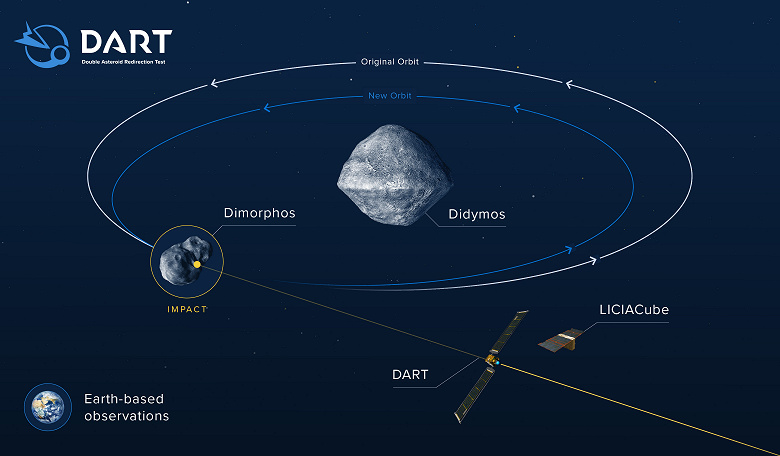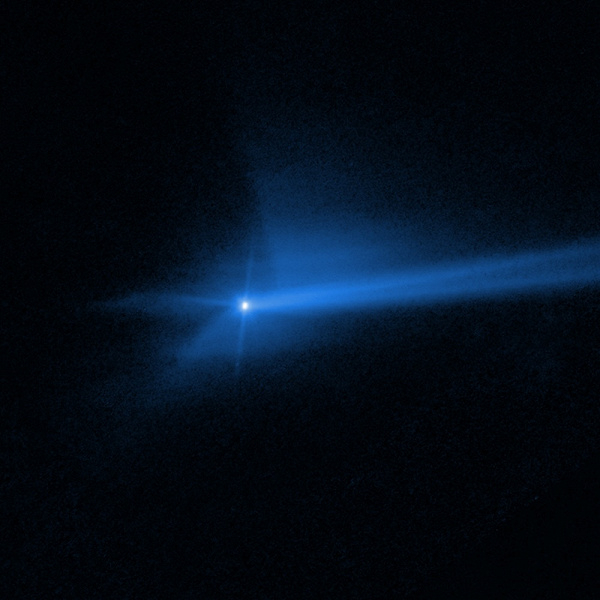Observations, modeling and forecasts: how the trajectories of debris from the Dimorphos asteroid will change after a collision with DART
The $325,000,000 DART mission was successfully completed in November 2022. The main goal of the mission was to study the possibility of changing the trajectory of the asteroid Dimorphos using a spacecraft. As a result of the impact, a trail of fragments of objects ranging in size from a micron to a meter was formed. A new paper analyzes the debris field to predict where it might end up.
Asteroid Dimorphos is part of a binary asteroid system with host asteroid Didymos. None of these asteroids pose a threat to Earth, but the DART mission provided an opportunity to test and develop new technologies to protect Earth from potential collisions with space objects.
On October 11, NASA announced that DART had successfully changed the orbit of Dimorphos, showing that the kinetic energy of a spacecraft can indeed change the trajectory of a potential threat. DART collided with Dimorphos, causing a plume to spread at approximately 2 km/s. The plume was observed by the Les Makes Observatory and the Hubble Space Telescope. The debris contained material ranging from dust-sized particles to objects the size of small meteors. Shortly before the impact, the LICIACube cubesat was detached from DART for long-term monitoring of the debris field.
The following observations allowed the researchers to detect fine structures inside the ejecta, which then transformed into a cone-shaped formation with a tail similar to that of a comet. This tail was subsequently thrown away from the asteroid system by solar radiation pressure, and the speed and mass of the particles were determined using ground-based images.

The analysis of the emissions made it possible to establish that about 3% of the fragments can remain in the orbit of the asteroid for 83 days. It was also found that 5% of 10 cm particles emitted at 0.12 and 0.18 m/s will remain in orbit after 60 days.
The long-term effects of larger emissions remain the subject of further research. Simulations 800 and 1550 days after the impact showed a gradual decline in the number of fragments associated with the asteroid system. Much of the decline in the number of large fragments was due to collisions with the Didymos and Dimorphos asteroids themselves. No simulation has shown that any fragment will leave the binary asteroid system.
Further research is needed to better understand the results of the DART mission. The Hera mission, planned by the European Space Agency, will travel to Didymos and Dimorphos 5 years after the DART impact. It will help evaluate changes in the orbit of Dimorphos and add to our knowledge of this binary asteroid system.

